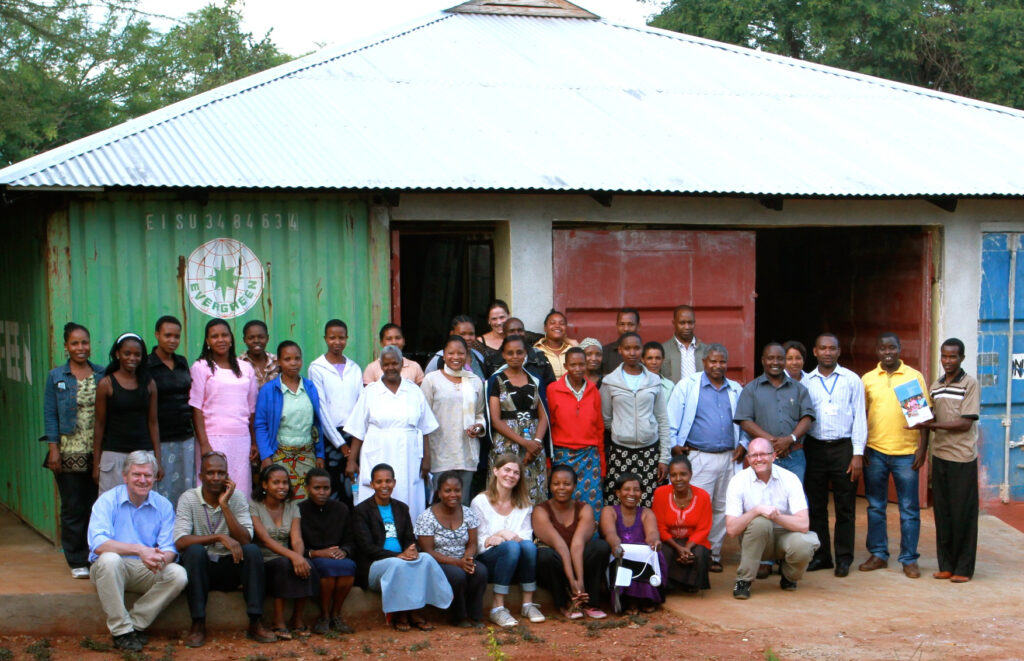As part of the Safer Births contributions to research in the field of newborn resuscitation, new six research articles have recently been published in peer-reviewed journals including a special issue “Newborn Resuscitation: Advances in Training and Practice” published in Children. These articles are based on research projects from Haydom Hospital in Tanzania and Stavanger University Hospital in Norway.

Motivators as key to training and learning
One study, Neonatal Resuscitation Skill-Training Using a New Neonatal Simulator, Facilitated by Local Motivators: Two-Year Prospective Observational Study of 9000 Trainings (Vadla, et al, 2022), evaluated effects of introducing local motivators to help mentor and encourage midwives to conduct training. Improvements were shown in staff participation, skill-training frequency, and simulated ventilation quality using the NeoNatalie Live simulator before and after introduction of motivators. One year after the introduction, the number of skill-trainings increased from 688 to 8451, participation of midwives increased from 43% to 74%, and quality of training performance categorized as “well done” increased from 75% to 91%. Using local motivators to enhance training was shown to be beneficial to simulation-based learning. This shows that it is possible to conduct brief but frequent in-situ trainings even in a hospital with very limited resources and a low midwife/patient ratio. The learnings from this study will inform the Safer Births Bundle of Care scale-up in Tanzania.
Newborn ECG patterns may predict outcomes
Linde, et al reported on the findings of manual investigation of ECG morphology immediately after birth among 494 resuscitated and 25 healthy infants at Haydom Lutheran Hospital between 2013-2018, using the newborn heart rate monitor, NeoBeat. ST-segment elevation was commonly seen and not associated with negative outcomes. Other ST-segment abnormalities were associated with prolonged ventilation and worse newborn outcomes. This study is an important step towards more automated analyses by the biomedical signal data analysis group at University of Stavanger, that may identify signal pattens not seen by the human eye. To learn more, read Delivery Room ST Segment Analysis to Predict Short Term Outcomes in Near-Term and Term Newborns
Heart rate feedback used to guide newborn resuscitation
Assessment of heart rate (HR) is essential during newborn resuscitation. In a comparison of timelines and time with heart rate feedback from the three devices during 48 newborn resuscitations at Stavanger University Hospital, Rettedal et al found that the novel dry-electrode NeoBeat was faster to place, presented heart rate more rapidly, and provided feedback on heart rate for a larger proportion of time during ongoing resuscitation compared to the standard devices; 3-lead ECG and Pulse Oximetry. To learn more, read Comparison of Heart Rate Feedback from Dry-Electrode ECG, 3-Lead ECG, and Pulse Oximetry during Newborn Resuscitation.
NeoNatalie Live simulates realistic newborn ventilation
Haynes et al studied if ventilating the NeoNatalie Live simulator resembles real newborn ventilations, by comparing ventilation parameters from simulations with real newborn resuscitations at Stavanger University Hospital. A high level of consistency was found between the simulator and real-life ventilations. Two limitations of the simulator were found to provide focus for further improvements. Read more here; Novel Neonatal Simulator Provides High-Fidelity Ventilation Training Comparable to Real-Life Newborn Ventilation.
How often should we train?
In A Randomised Controlled Study of Low-Dose High-Frequency In-Situ Simulation Training to Improve Newborn Resuscitation, Haynes et al recruited 220 healthcare workers at Stavanger University Hospital into two groups: 1) in-situ simulation training twice a month or 2) train as often as you wish for 9 months. Group 1 trained a mean of 8.0 times and group 2 a mean of 2.8 times over 9 months. The majority of participants in group 1 were unable to achieve training targets, and statistical differences were not found between the groups in maintenance of ventilation competence. Subgroup analysis comparing no (0) training to at least monthly (9) training identified a clear benefit to regular training. Simulated ventilation competence improved significantly for all participants over the course of the study, and inexperienced workers performed as good as experienced workers at the end.
Visualization of tidal volumes critical for newborn outcomes
Published in Resuscitation, this study described delivered pressures and tidal volumes when resuscitating term newborns, using the flow-based NeoPuff T-piece resuscitator commonly used during newborn resuscitation in high-resource settings. Tidal volumes and pressures delivered by the NeoPuff T-piece resuscitator during resuscitation of term newborns by Bjorland et al includes 129 term asphyxiated newborns from June 2019-March 2021. In the early (1-20 inflations) and the late (21-100 inflations) phase of ventilation, median (IQR) inflation pressure was 30 (28–31) and 30 (27–31) mbar and tidal volume was 4.5 (1.6–7.8) and 5.7 (2.2–9.8) ml/kg, respectively. A substantial variation in tidal volumes was shown despite a relatively stable inflating pressure, and the delivered tidal volumes are at the lower recommended range. Adequate tidal volumes are critical for newborn outcomes, and this study highlights the need for monitors that can display delivered volumes.
These studies are the most recent additions to our extensive publication list.
